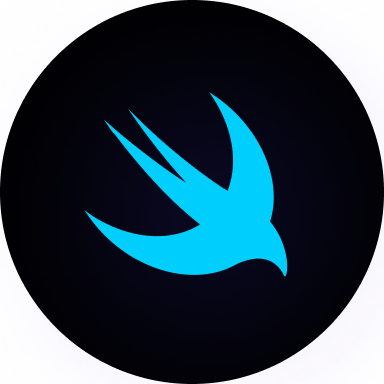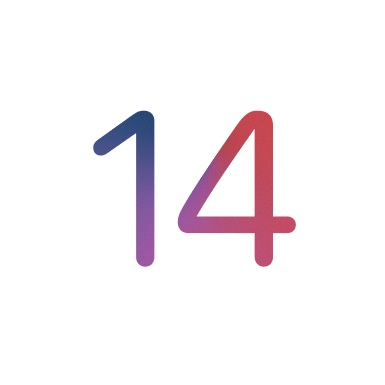Designing for iPad
Add to favorites
Designing an iPad app from Scratch
Play video
Learn Sketch
1
Learn Sketch
23:28
2
Powerful Start in Sketch
22:49
3
Design for iOS 11
31:30
4
Design for iPhone X
28:23
5
Designing for iPad
11:36
6
Design for Web
25:12
7
Design for Web Part 2
25:11
8
Tricks and Keyboard Shortcuts
20:43
9
Sketch Plugins
12:09
10
Nested Symbols
9:14
11
Sketch Libraries
7:00
12
Version Control
18:53
13
Working with Data
10:29
14
Adaptive Layouts
7:33
15
Working with Vector
20:12
16
Exporting Assets
13:44
17
Styleguide and Handoff
9:11
18
Advanced Techniques
12:40
19
Intro to Framer
27:51
20
Previewing and Sharing
7:22
21
Prototyping in Keynote
3:33
Use the Correct Library Template
The iOS 11 - iPhone X template is only for iPhone X, it can’t be reused for the iPad or iPhone 8, and below, the measurement is a bit different.
If you have downloaded the iOS 11 Sketch template from the Apple design resources, they have provided template for the other iPhone and iPad too. We can use that for this tutorial.
Unzip the iOS-11-Sketch.zip and you will see a Sketch file name “UIElements+DesignTemplates+Guides.sketch”. Rename it to “iOS 11” so that we can easily find the elements inside it. Now go to the Libraries tab in Sketch Preferences, and drag the iOS 11 template to it to use as Library.
Disable Library
You can temporary disable the iOS 11 - iPhone X and Sketch default iOS UI Design Library. All the Library Symbols that you’ve inserted in the Canvas will still attaching to its original document. Go to Sketch Preferences › Libraries, and uncheck the iOS 11 - iPhone X and iOS UI Design Library, this method will hide the Library from the Sketch and the Sketch Runner.
Adaptive Design
Let’s start using the Bookmarks screen to design an iPad version of it. Press A, toggle the Artboard orientation to Landscape, and choose iPad 1024 x 768. By doing this will create an iPad Artboard beside the iPhone X Artboard.
Insert a Status Bar in the iPad Artboard by searching the keyword “status bar” in the Sketch Runner › Insert. Choose the one with the name “iOS 11 > Bars/Status Bar/Light Status Bar”. Insert it to the top-left of the iPad Artboard. You will notice the width of the Status Bar is 375px, this is ok because all the elements from the Sketch iOS UI Design are made with Resizing method to make it flexible to resize. Just increase the Status Bar width to same as the iPad Artboard, which is 1024px. The Status Bar won’t stretched to some unacceptable visual; instead, its elements stay in the same size but at different positions. We called this Adaptive Design, and it is very useful for designing in multiple screen sizes.
Navigation Bar
Copy the Navigation Bar group from the iPhone X Artboard, and paste it to the top-left of the iPad Artboard. As we mentioned, some of the iPhone X element sizes are different, and this Navigation Bar is the one. What we need to do is to replace the iPhone X Navigation Bar Symbol to the other Navigation Bar Symbol from iOS UI Design.
Select and right-click the Navigation Bar Library Symbol, hover to the Replace With › iOS 11 › Bars › Navigation Bar, and choose the “Light Large Navigation Bar with Search”. Right-click again on the new Navigation Bar, and select the Set to Original Size at the last option of the menu. Then move up the Font Resize icons and Night Mode icon to give them 70px margin to the bottom of the Navigation Bar. You will notice that Bookmarks override still applied and no need to hide other elements, because it is come from the same Apple resources.
Unlink Symbol from Library
We don’t need the translucent background on the Navigation Bar, but there’s no way to hide it from the Overrides panel. We can unlink this Symbol and convert it to our document Local Symbol. It is not recommended always to unlink Symbol from its original Library, but if we want to control the Symbol design, this is the only way.
Double-click on the Navigation Bar Symbol, and you will see a dialog slide down. Click the Unlink from Library, and the Navigation Bar Symbol will immediately convert to Local Symbol. In the meantime, Sketch will bring you to the current document Symbols Page. Now, you can edit the Symbol design as you like. From here, hover to the Background layer and click the Eye icon to hide this layer. Click the Return to Instance button on the top-left of the Canvas, and you will see the Background is now hidden.
Resizing Constraints
Resize the whole Navigation Bar group to 750px width. You will notice that three icons on the right are distorted. We can resolve this by using the Resizing Constraints features. Applying constraints to layers allows you to decide how they should behave when you resize the Symbol, Artboard, or group. Constraints can be applied to any layer that lies inside an Artboard or group. By doing this, we can achieve the Adaptive Design.
Let’s undo the Navigation Bar group to its previous size. Then select the three icons, and you will see Resizing Constraints in the Inspector panel. By default, none of any constraints are applied to your layers. On the left, you can define the edges each side of your layer should pin to. And on the right, you can decide whether the size of the layer should stretch, or remain at a fixed height and/or width on resize.

Fixed width and height
Let’s enabled the Fix Width and Fix Height for the three icons so they won’t be distorted when resizing the parent group. If you increase the width of the Navigation Bar group now, the icons are no longer distorted. But their position is off the place. Undo and select the three icons again, and pin them to the right, so its distance does not change when you resize the parent group or the Artboard. Lastly, resize the Navigation Bar group to 750px and align it with the center of the iPad Artboard.
Table View
Next, copy the four Bookmarks Row Symbol from the iPhone X Artboard to the iPad Artboard. Since we have more space on the iPad, we can stack the Bookmarks Row into two columns Table View. With this, you can view more contents without keep scrolling the screen. Let’s add more Table View for better illustrate the idea.
iPad Tab Bar
The Tab Bar has some changes in iOS 11, but you will only see it in iPhone Landscape mode and on iPad. The brand new appearance of the Tab Bar is showing the icon and text side by side. This can save the space for contents when you are viewing iPhone in Landscape view. And also better accessibility when seeing in the large given space of the iPad screen.
Before we jump into the new iOS 11 Tab Bar, we still can use the standard Tab Bar which is the icon on top and the text at the bottom. We can’t use the Tab Bar on iPhone X Artboard because it has the extra space below for the iPhone X Home Indicator. So let’s insert a Tab Bar for iPad. Search with the keyword “tab bar 5” with Sketch Runner › Insert tab, then choose the one with the name “iOS 11 > Bars/Tabbar/Light 5 Tabs” and put it to the iPad Artboard. Increase the width to 1024px and place it at the bottom center of the iPad Artboard. Now you can start insert the icons and text accordingly from the Overrides panel.
Final Touch
Currently, don’t have the iOS 11 template specially built for the iPad. But you can download the new iPad Tab Bar Sketch file and use it on the Bookmarks screen. We are going to release the UI Kit soon, stay tuned!
Once you’ve downloaded, open the Sketch file, and copy it to your iPad Artboard. Simply replace the icons and text just like what you did for the standard Tab Bar. Now, you have done the Design+Code iPad app Bookmarks screen! Keep it up!
Templates and source code
Download source files
Download the videos and assets to refer and learn offline without interuption.
Design template
Source code for all sections
Video files, ePub and subtitles
Videos
ePub
Assets
Subtitles
1
Learn Sketch
Introduction to Sketch Basic Tools
23:28
2
Powerful Start in Sketch
Strong Foundations for your Sketch Workflow
22:49
3
Design for iOS 11
Designing an iOS App from scratch in Sketch
31:30
4
Design for iPhone X
Designing and adapting for iPhone X in Sketch
28:23
5
Designing for iPad
Designing an iPad app from Scratch
11:36
6
Design for Web
Designing a Website from Scratch
25:12
7
Design for Web Part 2
Designing a Website from Scratch 2
25:11
8
Tricks and Keyboard Shortcuts
Boost your productivity in Sketch
20:43
9
Sketch Plugins
Essential Sketch Plugins for Designers and Developers
12:09
10
Nested Symbols
Design with More Flexibility by Nesting Symbols
9:14
11
Sketch Libraries
Share Symbols with Other Designers
7:00
12
Version Control
The Github for Designers
18:53
13
Working with Data
Make your design meaningful with real content
10:29
14
Adaptive Layouts
Working with Multiple Resolutions
7:33
15
Working with Vector
Vector Techniques in Sketch
20:12
16
Exporting Assets
Delivering Assets to Multiple Devices in Sketch
13:44
17
Styleguide and Handoff
Consistent design language in your team
9:11
18
Advanced Techniques
Master Sketch with these Tricks
12:40
19
Intro to Framer
Design and Code animations with Framer
27:51
20
Previewing and Sharing
Test drive on your devices
7:22
21
Prototyping in Keynote
Prototyping in Keynote Using Magic Move
3:33
Meet the instructors
We all try to be consistent with our way of teaching step-by-step, providing source files and prioritizing design in our courses.
Pizza Yap
UI/UX Designer
I'm a product designer, UI, UX, and writer from Malaysia and currently based in Singapore. I'm focusing on interactive experiences for web and mobile apps.
Meng To
I design, code and write
Meng To is the author of Design+Code. Meng started off his career as a self-taught designer from Montreal and eventually traveled around the world for 2 years as his US VISA was denied. During his travels, he wrote a book which now has 35,000 readers.
40 courses - 193 hours

Master AI Prompting for Stunning UI
Learn how to leverage AI tools like Aura for creating beautiful designs, working with templates, and experimenting with advanced prompts. A concise guide for designers and developers to level up their skills.
9 hrs

Build SwiftUI apps for iOS 18 with Cursor and Xcode
In this course, we'll explore the exciting new features of SwiftUI 6 and Xcode 16 for building iOS 18 apps. From mesh gradients and text animations to ripple effects, you'll learn how to create polished, highly custom apps using the latest workflows. We'll also dive into using Cursor and Claude AI for AI-driven coding, helping you start strong and customize your apps.
5 hrs

Create your Dream Apps with Cursor and Claude AI
Learn to build your dream web apps from the ground up using Cursor, Claude AI, and a suite of powerful AI tools. This course covers everything you need, including React for frontend development, Firebase for backend integration, and Stripe for handling payments. You’ll also dive into advanced AI tools like Claude Artifacts, Galileo AI, v0.dev for UI, Ideogram for design generation, and Cursor Composer for full-scale development.
6 hrs

Build a React Site from Figma to Codux
In this course, you'll learn to build a website from scratch using Codux, starting with a Figma template. You’ll master responsive design, collaborate with developers on a real React project, export CSS from Figma using Locofy, set up breakpoints with media queries, add CSS animations, improve SEO, create multiple pages with React Router, and publish your site. By following best practices, you’ll bridge design and development, improve your web design skills.
2 hrs

Create 3D UI for iOS and visionOS in Spline
Comprehensive 3D Design Course: From Basics to Advanced Techniques for iOS and visionOS using SwiftUI
3 hrs

Master No-Code Web Design with Framer
In this free Framer course, you'll learn to create modern, user-friendly interfaces. Start with dark mode and glass designs, then move from Figma to Framer, using vectors and auto layout for responsive websites. Add animations, interactive buttons, and custom components with code. Finally, you'll craft a design system suitable for teamwork or solo projects, all in a straightforward and practical approach.
4 hrs

Build SwiftUI Apps for iOS 17
In this course, we’ll be exploring the fresh and exciting features of SwiftUI 5! As we craft a variety of iOS apps from the ground up, we'll delve deep into the treasure trove that is SwiftUI's user interface, interactions, and animations.
4 hrs

Build Beautiful Apps with GPT-4 and Midjourney
Design and develop apps using GPT-4 and Midjourney with prompts for SwiftUI, React, CSS, app concepts, icons, and copywriting
4 hrs

Build SwiftUI apps for iOS 16
Create animated and interactive apps using new iOS 16 techniques using SwiftUI 4 and Xcode 14
5 hrs

Build a 3D Site Without Code with Framer
Design and publish a responsive site with 3D animation without writing a single line of code
3 hrs

Create 3D Site with Spline and React
Design and code a landing page with an interactive 3D asset using Spline and CodeSandbox
1 hrs

Build an Animated App with Rive and SwiftUI
Design and code an iOS app with Rive animated assets, icon animations, custom layouts and interactions
3 hrs

Build a SwiftUI app for iOS 15 Part 3
Design and code a SwiftUI 3 app with custom layouts, animations and gestures using Xcode 13, SF Symbols 3, Canvas, Concurrency, Searchable and a whole lot more
4 hrs

Build a SwiftUI app for iOS 15 Part 2
Design and code a SwiftUI 3 app with custom layouts, animations and gestures using Xcode 13, SF Symbols 3, Canvas, Concurrency, Searchable and a whole lot more
3 hrs

Build a SwiftUI app for iOS 15
Design and code a SwiftUI 3 app with custom layouts, animations and gestures using Xcode 13, SF Symbols 3, Canvas, Concurrency, Searchable and a whole lot more
4 hrs

React Livestreams
Learn how we can use React Hooks to build web apps using libraries, tools, apis and frameworks
4 hrs

Design Founder Livestreams
A journey on how we built DesignCode covering product design, management, analytics, revenue and a good dose of learning from our successes and failures
2 hrs

SwiftUI Advanced Handbook
An extensive series of tutorials covering advanced topics related to SwiftUI, with a main focus on backend and logic to take your SwiftUI skills to the next level
4 hrs

iOS Design Handbook
A complete guide to designing for iOS 14 with videos, examples and design files
2 hrs

SwiftUI Handbook
A comprehensive series of tutorials covering Xcode, SwiftUI and all the layout and development techniques
7 hrs

Build a web app with React Hooks
Learn how we built the new Design+Code site with React Hooks using Gatsby, Netlify, and advanced CSS techniques with Styled Components.
4 hrs

UI Design Handbook
A comprehensive guide to the best tips and tricks for UI design. Free tutorials for learning user interface design.
2 hrs

Figma Handbook
A comprehensive guide to the best tips and tricks in Figma. Not affiliated with or endorsed by Figma, Inc.
6 hrs

SwiftUI for iOS 14
Build a multi-platform app from scratch using the new techniques in iOS 14. We'll use the Sidebar and Lazy Grids to make the layout adaptive for iOS, iPadOS, macOS Big Sur and we'll learn the new Matched Geometry Effect to create beautiful transitions between screens without the complexity. This course is beginner-friendly and is taught step-by-step in a video format.
3 hrs

SwiftUI Livestreams
This is a compilation of the SwiftUI live streams hosted by Meng. Over there he talks and teaches how to use design systems, typography, navigation, iOS 14 Design, prototyping, animation and Developer Handoff.
19 hrs

UI Design Livestreams
This is a compilation of the UI live streams hosted by Meng. Over there he talks and teaches how to use design systems, typography, navigation, iOS 14 Design, prototyping, animation and Developer Handoff.
26 hrs

UI Design for Developers
In this course we'll learn how to use design systems, set up break points, typography, spacing, navigation, size rules for adapting to the iPad, mobile and web versions, and different techniques that translate well from design to code.
3 hrs

Build an app with SwiftUI Part 3
This course was written for designers and developers who are passionate about design and about building real apps for iOS, iPadOS, macOS, tvOS and watchOS. SwiftUI works across all of those platforms. While the code is not a one-size-fits-all, the controls and techniques involved can apply to all platforms. It is beginner-friendly, but it is also packed with design tricks and cool workflows about building the best UIs and interactions.
4 hrs

Build an app with SwiftUI Part 2
This course was written for designers and developers who are passionate about design and about building real apps for iOS, iPadOS, macOS, tvOS and watchOS. SwiftUI works across all of those platforms. While the code is not a one-size-fits-all, the controls and techniques involved can apply to all platforms. It is beginner-friendly, but it is also packed with design tricks and cool workflows about building the best UIs and interactions.
4 hrs

Build a full site in Webflow
Webflow is a design tool that can build production-ready experiences without code. You can implement CSS-driven adaptive layouts, build complex interactions and deploy all in one tool. Webflow also comes with a built-in content management system (CMS) and Ecommerce for creating a purchase experience without the need of third-party tools.
3 hrs

Advanced Prototyping in ProtoPie
ProtoPie is a cross-platform prototyping tool that creates prototypes nearly as powerful as those made with code, with half of the efforts, and zero code. It's perfect for designers who want to quickly experiment with advanced interactions using variables, conditions, sensors and more.
3 hrs

Build an app with SwiftUI Part 1
This course was written for designers and developers who are passionate about design and about building real apps for iOS, iPadOS, macOS, tvOS and watchOS. SwiftUI works across all of those platforms. While the code is not a one-size-fits-all, the controls and techniques involved can apply to all platforms. It is beginner-friendly, but it is also packed with design tricks and cool workflows about building the best UIs and interactions.
4 hrs

React Native for Designers Part 2
React Native is a popular Javascript framework that builds on top of React by using native components to create a real mobile app indistinguishable from one made using Xcode or Android Studio. The main difference with native development is that you get to use CSS, hot-reload, Javascript and other familiar techniques that the Web has grown over the past decades. Most importantly, you're building for both iOS and Android using the same codebase.
3 hrs

React Native for Designers
React Native is a popular Javascript framework that builds on top of React by using native components to create a real mobile app indistinguishable from one made using Xcode or Android Studio. The main difference with native development is that you get to use CSS, hot-reload, Javascript and other familiar techniques that the Web has grown over the past decades. Most importantly, you're building for both iOS and Android using the same codebase.
5 hrs

Design System in Figma
Learn how to use and design a collaborative and powerful design system in Figma. Design Systems provide a shared library of reusable components and guidelines and that will let you build products much faster
3 hrs

React for Designers
Learn how to build a modern site using React and the most efficient libraries to get your site/product online. Get familiar with Grid CSS, animations, interactions, dynamic data with Contentful and deploying your site with Netlify.
3 hrs

Swift Advanced
Learn Swift a robust and intuitive programming language created by Apple for building apps for iOS, Mac, Apple TV and Apple Watch
9 hrs

Learn Swift
Learn Swift a robust and intuitive programming language created by Apple for building apps for iOS, Mac, Apple TV and Apple Watch
4 hrs

Learn Sketch
Learn Sketch a design tool entirely vector-based and focused on user interface design
5 hrs

Learn iOS 11 Design
Learn colors, typography and layout for iOS 8
1 hrs
